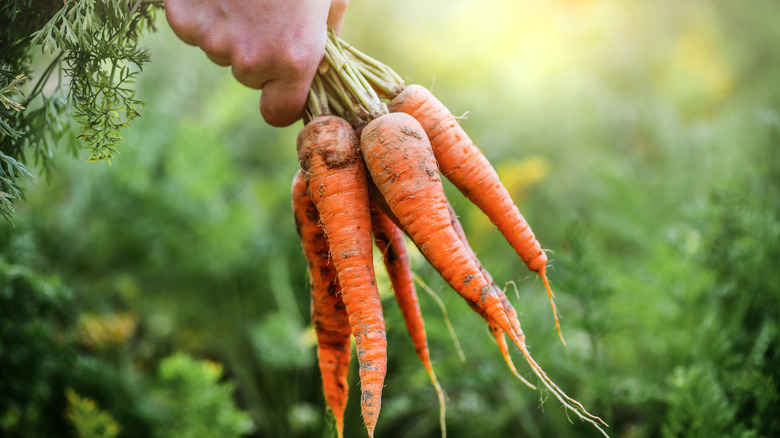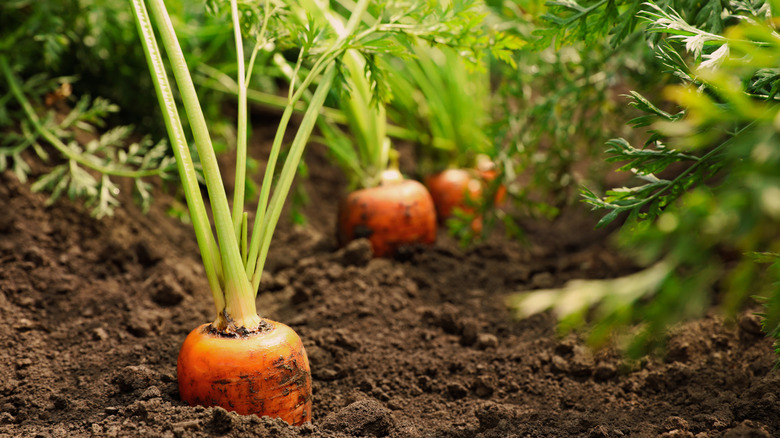This Is Why Your Homegrown Carrots Taste So Bitter
You thought you did everything right. You checked the soil, watered adequately, positioned for the best sunlight, even resisted the urge to grow new carrots from just the tops, but your kids' favorite vegetable still tastes so bitter. Why? Don't beat yourself up. Even the most seasoned home gardeners deal with crop failures from time to time. The reason homegrown carrots lack a sweet, earthy flavor is due to terpenoids that become overpowering when carrots are harvested too soon or grown in excessively hot temperatures.
Terpenoids. Sounds more like a type of insect you desperately try to keep away from the carrots in your garden rather than chemical compounds that produce the vegetable's signature aroma and flavor. Basically, whether you're growing carrots in containers or a designated vegetable patch, if they smell off and taste soapy when you remove them from the soil, you may have a terpenoid problem. As carrots mature, they develop terpenoids and sugars; however, the former emerges in the early stages of growth while the latter manifests in the end stages closer to harvest time. If you pick carrots too soon, they'll contain higher levels of terpenoids than sugar and end up tasting more acrid than sweet. Moreover, the composition of terpenoids can be affected by environmental factors. In the case of carrots, if they're grown in high temperatures, terpene synthesis increases, and you'll likely be left with orange veggies that contain an unpleasant taste. Fortunately, there are simple ways to prevent this from happening.
Tips for timing carrot harvest and avoiding excessive heat exposure
The trick to growing healthy carrots that don't taste like stale coffee is to prevent potential terpenoids problems. Timing your harvest correctly will dramatically reduce your chances of biting into a bitter carrot. Generally, carrots can be picked about 60 to 80 days after planting, depending on variety. However, to be safe, it's best to consult your seed packet for a more specific harvest schedule. Additionally, look for visual clues such as robust tops that average about 10 to 12 inches tall. This is a sign that the root is properly developed. Likewise, if the top portion of the carrot root is sitting above the soil line and appears to have a vibrant orange color, it's likely mature enough to be picked.
To ensure sweet homegrown carrots, avoid growing the root vegetable in temperatures that are consistently hotter than 80 degrees Fahrenheit. An ideal habitat features temperatures between 60 and 65 degrees Fahrenheit, which allows for an optimal balance of terpenoids and sugar production. If you live in an area that experiences warm summers, consider planting carrots in spring or early fall.
Finally, environmental stress can also cause carrots to develop a bitter taste. Consequently, it pays to water your carrots regularly. Young carrots need about 1 inch of water per week while more mature roots require 2 inches per week. Additionally, it's important to consistently weed your carrot garden and protect the vegetable from pests, such as wire worms.

